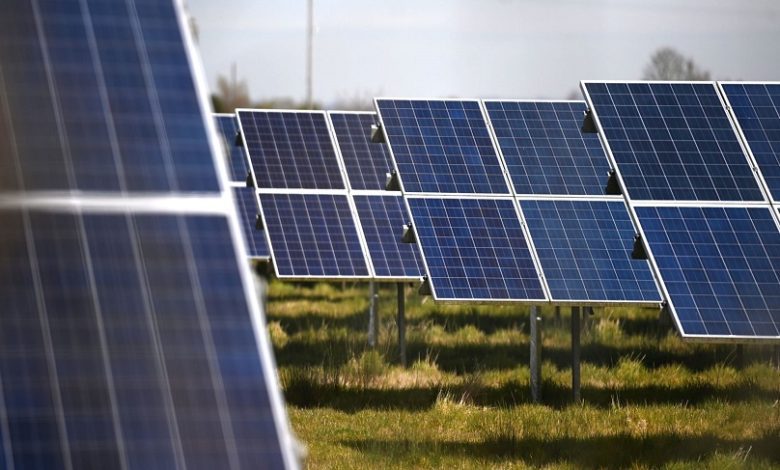Solar Panels in India: A Complete Guide to Their Types, Differences, Features and Prices

In recent years, the rapid advancement of renewable energy technology has paved the way for solar panels to emerge as a popular and sustainable energy solution. Harnessing the power of the sun, solar panels have become a cost-effective and eco-friendly option for homeowners and businesses alike. With a multitude of solar panel types available in the market, it’s essential to understand their differences, unique features, and corresponding prices to make an informed decision. This comprehensive guide aims to shed light on the various solar panel types, their distinctions, features, and pricing, empowering you to make the best choice for your energy needs.
At the heart of every solar energy system lies the solar panel, also known as a photovoltaic (PV) module. These marvels of engineering capture sunlight and convert it into direct current (DC) electricity through the photovoltaic effect. The basic components of a solar panel include silicon solar cells, a glass casing, a metal frame, and wiring to connect the cells to form a solar array.
When sunlight strikes the surface of the solar cells, it excites electrons within the silicon material, causing them to flow and create an electric current. This electrical energy can then be harnessed to power a wide array of applications, from small residential setups to large-scale utility installations.
Monocrystalline Solar Panels
Monocrystalline solar panels are one of the most established and widely used solar technologies. These panels are made from a single silicon crystal structure, which results in their characteristic dark hue. Monocrystalline panels boast high energy efficiency, making them an excellent choice for limited roof space.
Key Features:
- High Efficiency: Monocrystalline panels can convert sunlight into electricity at an efficiency of up to 22%. This means they generate more power per square foot, maximizing energy output.
- Space-Efficient: Due to their high efficiency, monocrystalline panels require less space, making them suitable for smaller rooftops or areas with limited space availability.
- Longer Lifespan: These panels have a longer lifespan, typically lasting 25 to 30 years, making them a durable and reliable investment.
Price Range: The cost of monocrystalline solar panels is affordable and depending on the manufacturer and wattage.
Polycrystalline Solar Panels
Polycrystalline solar panels are another common type of solar technology. Unlike monocrystalline panels, polycrystalline panels are made from multiple silicon crystals, giving them a distinctive bluish tint. While they are slightly less efficient than their monocrystalline counterparts, they are a budget-friendly option for many homeowners. Oneklick solar panel distributor in India provide Polycrystalline Solar Panels.
Key Features:
- Cost-Effective: Polycrystalline panels are generally more affordable than monocrystalline panels, making them an attractive choice for those on a tighter budget.
- Eco-Friendly Manufacturing: The production process of polycrystalline panels results in less waste material, contributing to a greener manufacturing approach.
- Suitable for Larger Installations: If you have ample roof space, the lower efficiency of polycrystalline panels might not be a significant concern, making them suitable for larger installations.
Price Range: Polycrystalline solar panels are relatively affordable, and depending on the wattage and brand.
Thin-Film Solar Panels
Thin-film solar panels differ significantly from traditional crystalline panels as they use a different photovoltaic technology. Instead of using silicon crystals, thin-film panels are made by depositing thin layers of light-absorbing material onto a substrate. While they offer distinct advantages, such as flexibility and lightweight, they also come with some drawbacks.
Key Features:
- Flexibility: Thin-film panels are flexible and lightweight, making them suitable for unconventional installations, such as on curved surfaces or portable solar applications.
- Low-Light Performance: Thin-film panels perform better than crystalline panels in low-light conditions, making them suitable for regions with overcast weather.
- Lower Efficiency: One of the drawbacks of thin-film panels is their lower efficiency, which means you’ll need more space to achieve the same energy output as crystalline panels.
Price Range: Thin-film solar panels are generally the most cost-effective option, and it’s depending on the wattage and brand.
Bifacial Solar Panels
Bifacial solar panels are a relatively new technology gaining popularity in the solar market. These panels can absorb sunlight from both sides, capturing sunlight reflected from the ground and increasing their overall energy generation.
Key Features:
- Enhanced Energy Yield: Bifacial panels can achieve higher energy yields by capturing reflected sunlight, increasing overall efficiency and reducing the levelized cost of electricity (LCOE).
- Durability: Bifacial panels are designed with durable materials, ensuring a longer lifespan and improved resistance to weather conditions.
- Versatility: These panels can be used in various installation types, including ground-mounted systems and rooftop installations.
Price Range: Bifacial solar panels are generally more expensive than traditional monocrystalline or polycrystalline panels. Per panel prices depending on the wattage and brand.
Monocrystalline PERC Solar Panels
Passivated Emitter Rear Cell (PERC) technology is an innovation in monocrystalline solar panels that enhances their efficiency and performance. By adding a rear-side passivation layer, PERC panels minimize electron recombination, resulting in higher energy output.
Key Features:
- High Efficiency: Monocrystalline PERC panels achieve even higher efficiency than standard monocrystalline panels, often reaching 22% to 23% efficiency.
- Temperature Tolerance: PERC panels perform well in high-temperature conditions, making them suitable for hotter climates.
- Improved Shading Tolerance: The rear cell design of PERC panels allows them to handle shading situations better, maintaining higher energy production.
Price Range: Monocrystalline PERC solar panels are typically priced per panel, depending on the wattage and manufacturer.
Solar Energy Storage Solutions
One significant challenge of solar energy lies in its intermittent nature – the sun doesn’t shine 24/7. As a result, solar installations require effective energy storage solutions to ensure a continuous power supply. Battery technologies, such as lithium-ion batteries, have evolved considerably to address this issue. They store excess energy generated during peak sunlight hours and release it during periods of low or no sunlight. This allows users to become more energy-independent and reduce their reliance on the grid, leading to increased energy resiliency and cost savings.
Solar Panels and Grid Integration
The integration of solar panels into the existing energy grid has been a subject of ongoing research and policy considerations. As the share of solar energy in the overall energy mix increases, grid operators must adapt to accommodate this variable energy source. Smart grid technologies, demand response mechanisms, and advanced forecasting algorithms are being implemented to optimize the use of solar energy and maintain grid stability.
Economics of Solar Energy
The economics of solar energy have undergone a transformative shift in recent years. Significant reductions in manufacturing costs, coupled with government incentives and tax credits, have made solar panels more affordable and accessible to homeowners and businesses alike.
Conclusion
As the demand for renewable energy surges, solar panels have become increasingly accessible, reliable, and cost-effective. Understanding the differences between various solar panel types, including monocrystalline, polycrystalline, thin-film, bifacial, and monocrystalline PERC panels, empowers consumers to make informed decisions that align with their energy needs and budget. Each type offers distinct features, efficiencies, and price points, catering to different preferences and geographical locations. solar panels, with their numerous advantages and the support of efficient energy storage systems, offer a clean, green, and economically viable solution to our energy needs, paving the way for a cleaner and brighter tomorrow. Embracing solar energy represents a critical step towards a more sustainable and environmentally friendly world.
However, advancements in energy storage technologies, such as batteries and other storage systems, have addressed this concern. Energy storage allows excess energy generated during sunny periods to be stored for use during cloudy days or at night, making solar power a more reliable and dependable source of electricity. Solar energy is abundant, widely available, and can be harnessed in various applications, from residential rooftops to large-scale solar farms.
OneKlick Techno Renewable is a leading solar panel distributor in india. OneKlick offers the best solar modules at customer needs and queries. It’s essential to engage with reputable vendors or solar companies, as the quality of installation and the components used can significantly impact the system’s performance and longevity. By harnessing the power of solar energy, we not only reduce our reliance on non-renewable resources but also contribute to a cleaner and more sustainable future for generations to come.





